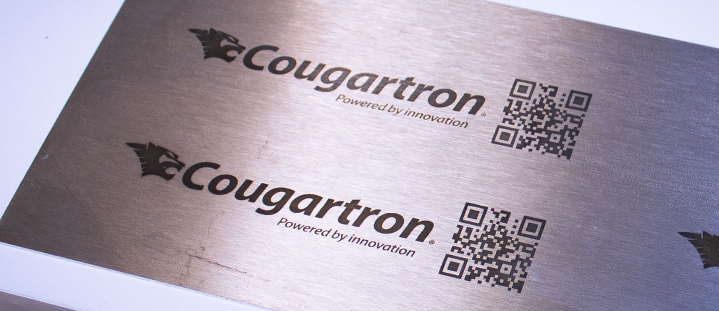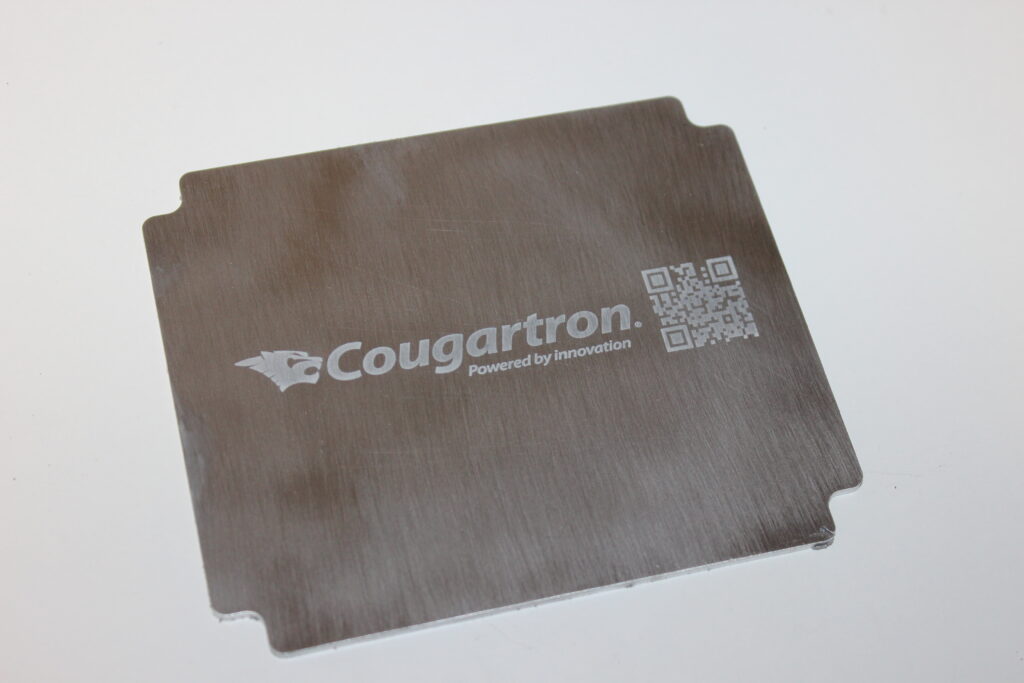Difference between electrolytic AC and DC marking & etching
Marking & Etching | Thursday, 01 March 2018
A brief overview between marking and etching AC/DC mode
Terms such as ‘marking’ and ‘etching’ are often used interchangeably to describe several related metal branding operations.
When it comes to the electrochemical method, marking and etching are performed with the help of mild electrolytic marking fluids and electricity.
Depending on the electrical current (AC or DC) used, marking and etching give different results and affect the metal surface differently.
AC Marking results in a dark mark/imprint on the metal piece – without any changes done to the surface.
DC marking (etching) is more similar to engraving – some of the surface is removed through a chemical reaction.
The effect on the metal surface is therefore the main difference between the AC / DC marking and etching.
See more details below.
Electrolytic marking - AC
Typically, the result of AC marking is a dark oxidized mark on the surface of most metals – stainless steel included.
In most cases, the process only affects the color of the topmost layer of the surface – where the stencil was positioned and the pressure was applied with the help of the marking head.
Electrolytic marking leaves the structure of the steel undamaged and causes no corrosion. The resulting mark is crisp, high-definition, and permanent – it can only be removed mechanically (grinding or using scotch brite).
The mark may only fade if the surface of the metal comes into contact with strong acids and chemicals.

Electrolytic etching - DC
Unlike the AC process, DC etching removes a portion of the upper metal layer and results in an incised light/white mark on the metal surface.
Depending on the metal used, AC and DC marking & etching can yield very similar results. For example, aluminum will in both cases provide results that appear to be white.
The etching depth is majorly influenced by the duration of the etching process and the strength of the machine (power unit) used. Typical figure is usually around 0, 0003 of an inch (0, 0076 mm) but this can be adjusted based on different production needs.
As the process involves removal of some of the upper metal layer, it is very important to preserve the molecular stability and ensure that no deformations of the metal surface occur.
This is partially guaranteed by using a DC electrical current instead of the AC one (employed for dark marking). In addition to this, it is recommended to always use material-specific etching acids for consistent and clear results.

Marking and etching equipment
AC and DC Marking/etching are both widely used in a number of different industries. Thus, the process typically depends on your individual needs and preferences.
However, the challenge lies in choosing the correct equipment for optimal results with both processes.
Cougartron has developed a number of practical solutions for electrolytic marking and etching.
Our MK12 marking system is ideal for smaller workshops and industrial environments – designed for both professionals and hobbyists. The newer addition to our marking range represents MK612 marking machine equipped with variable voltage technology that is especially useful when marking large logos and areas without losing color consistency.
The machines have no distinguished operating modes for marking and etching. Instead, it is automatically set to work with the AC electrical current for marking. With the addition of an adaptor that changes the electric flow from AC to DC – MK12 and MK612 are suitable for working in DC mode as well. Contact us directly at sales@cougartron.com if you are interested in this adaptor.
See below, how the MK12 marking machine is used in action:
Marking / Etching Fluids
Clear and precise marking & etching results on various metal surfaces are obtained by using appropriate fluids for the application.
We have developed a number of specialized marking fluids for different metal types, such as stainless, steel, aluminium, brass, titanium and more. We also carry a specialized etching fluid for aluminium.
Electrolytic marking fluids are mild, low-risk, and will not cause corrosion if applied properly.
Marking with Cougartron weld cleaner
We are also offering a unique Marking Set to make Cougartron weld cleaners capable of electrolytic marking and etching. Which makes it very practical, if one already owns a Cougartron weld cleaner.
This is how it works:
Marking Machines and sets for weld cleaners
Loading products...
Please wait while the products load.
Marking Fluids
Loading products...
Please wait while the products load.


 English
English  English (US)
English (US)  German
German  Danish
Danish  Swedish
Swedish  French
French  Polish
Polish  Spanish
Spanish